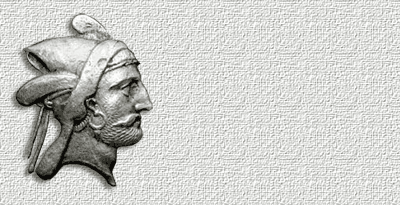Sources available regarding satraps are few and sometimes confusing in cases when satraps possessed identical or similar names during the same periods. This presentation shall not therefore cover all known satraps or satrapies. In fact the vast Achaemenid satrapies remain an enigma in certain ways, having covered an awesome 7.5 million square kilometres, approximately. Such represented the first Persian puissance dominating large areas of greater Iran according to Dr. Pierre Briant, professor of Achaemenid history and Civilization at the Collège de France. Pages one to three should be bypassed by those familiar enough with ancient Persia’s regions and wishing to pass on directly to the satraps.
Satrap lords tread a long beaten road of leadership, power, rebellion, treachery and loyalty through Persia’s time-honoured history. The designation “satrap” signifies a protector. Webster’s International Dictionary indicates its rooting in Sanskrit from “ksątra”; — might and power. The word in Old Persian, the rulers’ language, was
khshassapava, and in Greek,
satrapeia. Certain researchers believe this word is Median — also meaning “protector” — although no written Median documents have surfaced yet and their script remains silently unknown. Even the origin or meaning of the word “Media” we do not know. Some suggest Median is simply a dialect of Old Persian.
Traditionally historical information forthcomes from Darius’ Behistun (Bisotun)

inscription of 521 B.C. which is found along the road towards Ecbatana, his tomb at Naqš-I Rustam dated circa 492, and the Daiva inscription of 520-465 B.C. purportedly of Xerxes. Also Herodotus’ fourth century Anabasis and the recordings of Xenophon provide valuable information. For example, books seven to nine of Herodotus contain our principal sources of information regarding Xerxes. Other sources are varied such as those of Pliny, Isidorus Characenus, Diodorus of Sicily, Plutarch and others. Fortunately the satraps minted coinage, the first known so far to bear effigies of living personages, often their own. An examples is Sardes satrap
Tissaphernes portrayed upon a circa 400 B.C. coin. (See
Hellenic Ministry of Culture website). Such offers us a personal touch upon their past, as do their seals.
In 2005 an ancient green jasper seal came to light, expertized by the Hamadan Cultural Heritage Dept. In ancient Persian the cuneiform inscription may refer to Dadar Shish, satrap of Bactria. The Behistun Inscription designates two individuals of this same name: the Armenian Darius sent upon a military mission to Armenia, and the satrap of Bactria, both their names written as
Dâdarši. More research should follow.
The Old Testament also speaks of satraps in the books of Esther, Ezra and Daniel.
*1 Five Daiva inscriptions have turned up so far: one from Persepolis in Elamite, one from Pasargadae in Old Persian, another in Old Persian and one in Babylonian.
Persian rulers proudly name their victorious satraps in inscriptions. Darius (in old Persian:
Daryavahvshm) evokes them:
Dadarshi sent to Bactria,
Vivana, satrap in Arachosia,
Gobryas satrap of Elam.
Persian rulers described and inscribed their conquests, grasped by military might, by treachery or simply by gold.
 symbol opens images
symbol opens images
